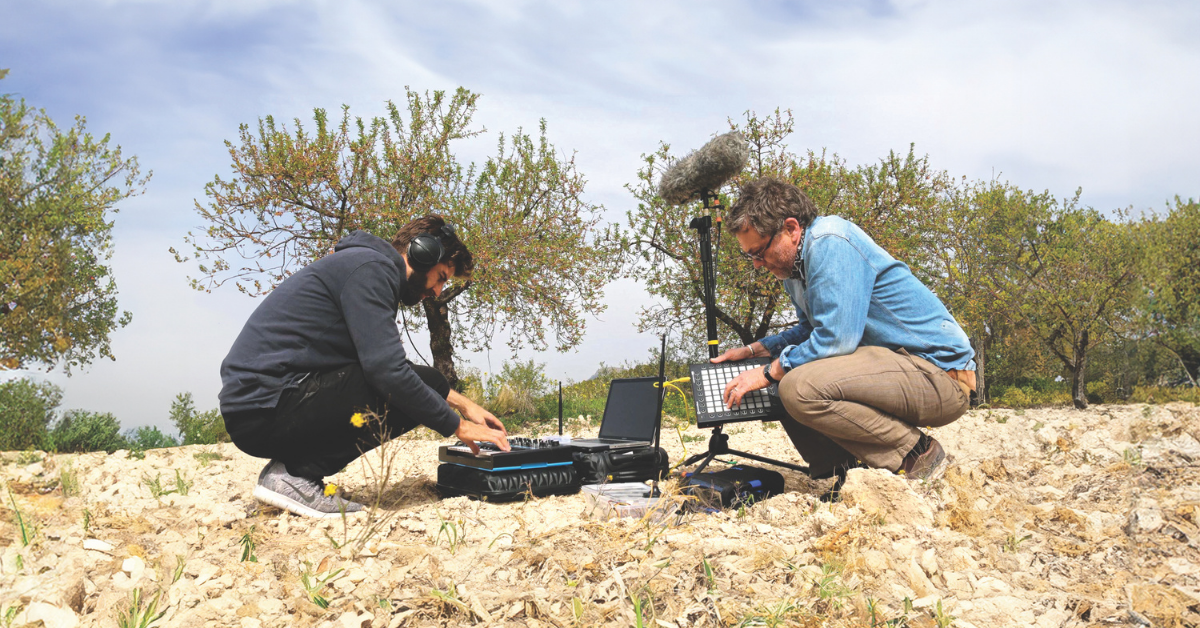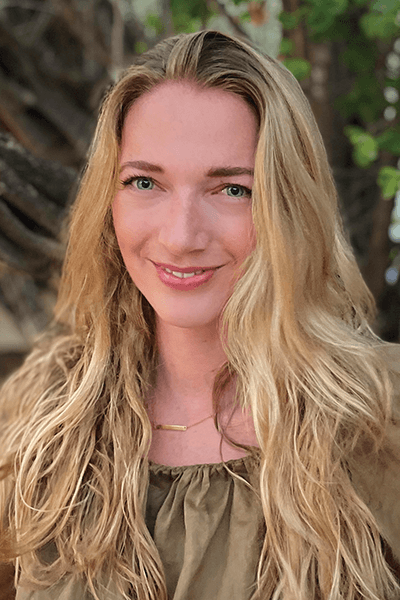May 10, 2024

Every landscape has a soundscape
BY DR. NADINA GALLE
Imagine walking into your neighborhood park. What do you see? The vibrant colours of flowers in bloom, children playing on swings and maybe even a couple of squirrels darting between trees. What do you smell? Perhaps the fresh scent of grass after a recent rain shower or the aroma of blossoms wafting through the air. What can you touch? The rough bark of a tree trunk, the smooth surface of a park bench or the soft petals of a flower. And what do you hear? Birds chirping, leaves rustling in the wind and the distant hum of city life. This rich tapestry of sensory experiences, or “soundscape,” forms the backdrop against which Dr. Mike Edwards, co-founder of Sound Matters together with Harry Coade, invites us to reconsider our relationship with sound.
I had the opportunity to sit down with Dr. Edwards on an episode of the Internet of Nature Podcast. He reminds me that we live in a visual world. "The amount of YouTube hours watched every day, the number of photos taken every minute, the visual nature of social media... We are inundated with visuals, prioritizing them in this world," remarks Dr. Edwards. Yet, amidst this visual overload, sound often plays second fiddle. "It's not to say sound is more important than visuals," Dr. Edwards clarifies, "but we need new ways of engaging with the world, and sound offers an avenue for that."
"No one talked about soundscapes until the COVID-19 lockdowns," Dr. Edwards said. As city streets fell silent, many experienced a moment of respite, allowing them to rediscover the subtle symphony of nature. "Everyone said, ‘there’s so many more birds!’ when in fact, "there are not more birds, you could just hear them for the first time," he said, chuckling. We experienced a heightened awareness of nature's sounds during the quietude of the lockdowns. This attunement to the natural world offers more than mere auditory pleasure; it serves as a pathway to cultivating a deeper sense of connection and belonging, vital for our mental and physical well-being. Dr. Edwards argues that amidst the “cacophony” of modern life, sound is often overlooked, becoming a "lost sense" in our increasingly noisy urban world.
This realization forms the cornerstone of Sound Matters' mission — to reconnect people with their environment through soundscapes. "It was about exploring how sound could connect people to the processes shaping the Earth," Dr. Edwards recounts. Drawing inspiration from indigenous notions of connection to the country, Sound Matters embarked on a journey to uncover the stories told by soundscapes. "We started doing several lectures around this, exploring soundscapes of crisis," Dr. Edwards explains, emphasizing the power of sound to evoke environmental issues like climate change and biodiversity loss.
Their work led them to collaborate with organizations like AlVelAl, Commonland and the Leopold Bachmann Foundation on projects like the Soil Composer — a sophisticated device designed to capture and translate the intricate sounds emitted by soil microorganisms into audible frequencies perceivable by the human ear. "The idea is to take people on a journey from soil that is almost dead to full of life," Dr. Edwards elaborates.
At its core, the Soil Composer comprises an array of highly sensitive sensors embedded within the soil, capable of detecting the minuscule vibrations and acoustic signals generated by microbial activity. These signals are then transmitted to a central processing unit equipped with advanced algorithms that interpret and translate them into rich, immersive soundscapes. By translating soil quality indicators into soundscapes, the Soil Composer offers a unique way to engage communities in environmental conservation.
As society grapples with pressing environmental challenges, Dr. Edwards believes that reconnecting with nature through sound is more critical than ever. "We live in noisy worlds," he observes, highlighting the need to silence the din of modernity and listen to the whispers of the natural world. Through initiatives like Sound Matters and the Soil Composer, Dr. Edwards endeavors to amplify these whispers, inviting us to listen, learn, and ultimately, reconnect with our environment.
"Sound is not just about what we hear," he asserts, "it's about how we feel and how we connect with our environment." This holistic approach to sound is evident in Sound Matters' projects, which aim to stimulate not only the auditory senses but also the emotional and intellectual faculties of participants.
In one such project, Sound Matters collaborated with urban planners and architects to incorporate sound design principles into public spaces. "We wanted to create environments that are not just visually appealing but also acoustically enriching," Dr. Edwards explains. By integrating natural sounds into urban landscapes, these spaces become more inviting and conducive to human well-being.
The concept of sonic placemaking extends beyond physical spaces to virtual realms as well. "With the rise of virtual reality and immersive technologies, we have new opportunities to create immersive soundscapes," says Dr. Edwards. These virtual experiences offer a means to transport individuals to remote natural environments, fostering a sense of connection and stewardship for the Earth.
However, Dr. Edwards acknowledges that the journey toward sonic stewardship has its challenges. "We live in a world dominated by noise pollution," he laments, citing the omnipresence of traffic, construction and industrial activities. To counteract this trend, Sound Matters advocates for soundconscious design and policy interventions to preserve and restore natural soundscapes.
But beyond the realm of policy and design, Dr. Edwards believes that individual action is equally vital. "Each one of us has the power to shape our sonic environment," he asserts. Whether it's practicing mindful listening or participating in community sound walks, there are myriad ways for individuals to engage with and appreciate the sounds of nature.
"Sound is a gift — one that connects us to the Earth and each other," says Dr. Edwards. In a world increasingly defined by division and discord, perhaps it is through the act of listening that we can find common ground and forge a path toward harmony. And in that harmony lies the promise of a brighter, more sustainable future — for ourselves and generations to come.
For a deeper dive, check out Episode S1E2 of the Internet of Nature Podcast with Dr. Mike Edwards, co-founder and chief listening officer at Sound Matters, or listen to the Soil Composer.
 Dr. Nadina Galle spotlights Internet of Nature (IoN) technologies and practitioners making a difference in how we can optimize soil health, manage urban forests, create liveable cities, and everything in between. To learn more about the IoN and to catch episodes of the Internet of Nature Podcast, visit: nadinagalle.com.
Dr. Nadina Galle spotlights Internet of Nature (IoN) technologies and practitioners making a difference in how we can optimize soil health, manage urban forests, create liveable cities, and everything in between. To learn more about the IoN and to catch episodes of the Internet of Nature Podcast, visit: nadinagalle.com.